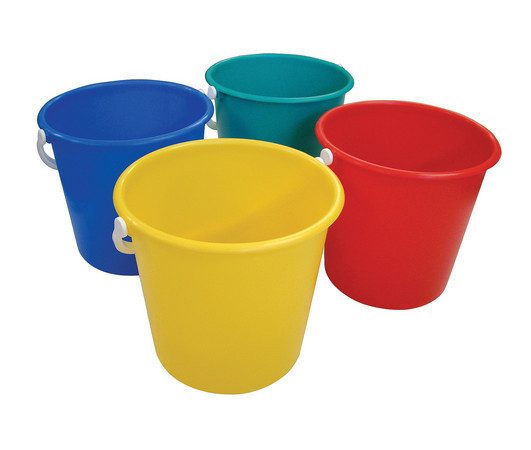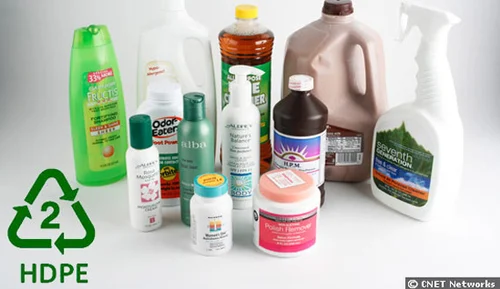Polyethylene (PE) plastic, a versatile and ubiquitous polymer, has evolved from a chance discovery in a laboratory to a material that shapes our daily lives and defines high-tech engineering marvels. This article explores the remarkable journey of PE plastic, from its modest beginnings to its pivotal role in cutting-edge technology, and delves into its various forms, applications, and contributions to sustainability.

The Birth of Polyethylene
The story of PE begins in 1933 when two scientists, Eric Fawcett and Reginald Gibson, were working for Imperial Chemical Industries (ICI) in the United Kingdom. While conducting experiments with high-pressure reactions, they inadvertently stumbled upon the creation of polyethylene. This serendipitous discovery laid the foundation for one of the most versatile plastics known to humanity.
Low-Density Polyethylene (LDPE): A Versatile Pioneer
Commercial production of PE commenced in the late 1930s, marked by the development of Low-Density Polyethylene (LDPE). LDPE quickly gained recognition for its flexibility, transparency, and chemical resistance. These characteristics made LDPE ideal for various applications, including plastic films, packaging materials, and squeeze bottles.
One of the most iconic uses of LDPE is in the ubiquitous plastic grocery bag. Lightweight, easy to manufacture, and readily recyclable, LDPE bags have become an integral part of our shopping experience. However, their environmental impact and challenges have led to increased awareness about sustainable alternatives.

High-Density Polyethylene (HDPE): Strength and Durability
In the 1950s, the introduction of High-Density Polyethylene (HDPE) marked a significant milestone in the evolution of PE. HDPE is distinguished by its high strength, stiffness, and durability. These attributes made HDPE an essential material in various industries, ranging from packaging to construction.
HDPE’s excellent resistance to chemicals and its ability to withstand impact has made it a popular choice for industrial and construction applications. It is commonly used in products like plastic bottles, pipes, containers, and geomembranes for landfill liners.

PE in Consumer Goods: Enhancing Daily Life
Polyethylene’s impact on consumer goods is undeniable. LDPE and HDPE play pivotal roles in enhancing our daily lives. LDPE’s lightweight and recyclable nature makes it an ideal choice for single-use plastic bags, reducing the need for disposable paper bags and contributing to convenience during shopping.
HDPE, on the other hand, ensures the safety and freshness of food and beverages. From milk jugs to shampoo bottles, HDPE containers are known for their ability to maintain product integrity, extend shelf life, and minimize waste.
PE in Medicine: Ensuring Safety and Sterility
In the medical field, safety and sterility are paramount. PE plastics play an essential role in ensuring these critical aspects. PE is used to create sterile packaging for medical devices, providing a protective barrier that keeps them safe from contamination until they are ready for use. This ensures the integrity and safety of healthcare products, from syringes to surgical instruments.
Furthermore, PE’s biocompatibility and resistance to bodily fluids make it suitable for medical implants and prosthetic components. These materials are designed to integrate seamlessly with the human body, contributing to improved patient outcomes and quality of life.
PE in Agriculture: Cultivating Sustainable Agriculture
Agriculture is a cornerstone of our global food supply. PE films have revolutionized agricultural practices by facilitating crop protection and efficient irrigation. These films create controlled environments that optimize temperature, humidity, and soil moisture, leading to increased agricultural yields. The benefits of PE in agriculture contribute significantly to global food security.
PE in Construction: Building a Strong Foundation
The construction industry relies on durable and reliable materials, and PE fits this requirement perfectly. HDPE pipes are widely used for water and gas distribution due to their corrosion resistance and long lifespan. Additionally, PE geomembranes serve as vital components in construction projects, preventing environmental contamination from landfills and ensuring the integrity of containment structures.
Cutting-edge engineering with PE
Beyond its everyday applications, PE is making its mark in high-tech engineering. In the aerospace industry, PE composites are gaining popularity for their ability to reduce the weight of aircraft, improve fuel efficiency, and reduce environmental impact. These advanced materials provide strength and durability while simultaneously lightening the load, a crucial innovation in an industry that demands precision and efficiency.
The automotive sector is another area where PE-based components have made significant inroads. These components, known for their lightweight properties and impact resistance, play a vital role in vehicle design. From interior trim components to fuel tanks, PE materials contribute to the overall performance and safety of automobiles.
Sustainability and Recycling: Closing the Loop
As the world grapples with plastic pollution and environmental concerns, recycling has emerged as a crucial aspect of PE’s sustainability. Advances in recycling technology have made it possible to transform used PE products into new materials. This closed-loop approach reduces plastic waste, conserves resources, and minimizes the environmental impact of PE plastic.
Recycled HDPE, for instance, finds application in products like plastic lumber, outdoor furniture, and recycling bins, showcasing the versatility of recycled PE materials. Additionally, initiatives promoting the recycling of LDPE, particularly plastic bags, aim to address environmental concerns related to single-use plastics.
Future Prospects: Innovation and Sustainability
The journey of PE plastic is far from over. As technology advances and environmental consciousness grows, researchers are actively working on enhancing PE’s sustainability. This includes developing bio-based and biodegradable versions of PE, aligning with the broader goals of reducing plastic waste and minimizing environmental harm.
One promising avenue is the exploration of biodegradable PE-like polymers that retain the desirable properties of traditional PE while offering improved end-of-life options. These innovations could help address some of the environmental challenges associated with plastic pollution.
Conclusion: The Ever-Evolving Role of PE Plastic
Polyethylene (PE) plastic, born out of a chance discovery, has grown to become an indispensable part of our lives. Its versatility spans from everyday consumer goods to cutting-edge engineering applications, making it a symbol of innovation and sustainability in the world of plastics.
As research and technology progress, we can expect PE to remain at the forefront of materials science, driving progress in countless industries. It is a reminder of how a chance discovery can lead to transformative innovations that shape our world and offer solutions to the challenges we face, from convenience in daily life to sustainability in a rapidly changing environment. Polyethylene, indeed, continues to prove its worth as a material that bridges the past, present, and future of human ingenuity and progress.
As research and technology progress, we can expect PE to remain at the forefront of materials science, driving progress in countless industries. It is a reminder of how a chance discovery can lead to transformative innovations that shape our world and offer solutions to the challenges we face, from convenience in daily life to sustainability in a rapidly changing environment. Polyethylene, indeed, continues to prove its worth as a material that bridges the past, present, and future of human ingenuity and progress.
Frequently Asked Questions
What is Polyethylene (PE)?
Polyethylene (PE) is a widely used synthetic polymer known for its versatility and durability. It is part of the polyolefin family of plastics and is produced in various forms, including Low-Density Polyethylene (LDPE) and High-Density Polyethylene (HDPE).
What are the common types of Polyethylene (PE)?
The two most common types of PE are LDPE (Low-Density Polyethylene) and HDPE (High-Density Polyethylene). These types have different properties and applications.
What are the key properties of Polyethylene (PE)?
PE is known for its flexibility, chemical resistance, low electrical conductivity, and high impact strength. HDPE is strong and rigid, while LDPE is flexible and transparent.
Where is Polyethylene (PE) commonly used?
PE is used in a wide range of applications, including packaging materials (plastic bags, bottles), construction (pipes, geomembranes), agriculture (agricultural films), automotive components, medical devices, and more.
Is Polyethylene (PE) recyclable?
Yes, Polyethylene is recyclable. Both LDPE and HDPE are commonly recycled, and many products are made from recycled PE materials.
What are the environmental concerns related to Polyethylene (PE)?
While PE is recyclable, plastic waste and litter are significant environmental concerns. Efforts are being made to reduce single-use plastics and promote recycling to mitigate these issues.
How is Polyethylene (PE) recycled?
PE recycling involves the collection, sorting, cleaning, and reprocessing of plastic waste. Recycled PE can be used to make a wide range of products, including plastic lumber, containers, and more.
What is the difference between LDPE and HDPE?
LDPE (Low-Density Polyethylene) is more flexible, and transparent, and has a lower melting point than HDPE (High-Density Polyethylene), which is strong, rigid, and has a higher melting point. HDPE is often used in applications requiring durability and strength, while LDPE is used where flexibility and transparency are important.
Can Polyethylene (PE) be used in high-temperature applications?
HDPE has better resistance to high temperatures compared to LDPE. HDPE can withstand temperatures up to 120°C (248°F) for short periods, while LDPE softens at lower temperatures.
How does Polyethylene (PE) contribute to sustainability?
PE contributes to sustainability through recycling efforts and the development of bio-based and biodegradable PE materials. Recycling reduces plastic waste, while bio-based and biodegradable options offer environmentally friendly alternatives.
Are there any health concerns related to Polyethylene (PE)?
PE is generally considered safe for use in various applications, including food packaging and medical devices. It is inert, non-toxic, and does not leach harmful chemicals into food or liquids.
What are some emerging innovations in Polyethylene (PE) technology?
Researchers are exploring new possibilities for PE, including the development of biodegradable PE-like materials, improved recycling processes, and enhanced sustainability practices.
Can Polyethylene (PE) be used in 3D printing?
Yes, PE is used in 3D printing, especially in filament form. It offers good layer adhesion and is suitable for creating durable and functional parts.
How can consumers contribute to PE plastic sustainability?
Consumers can reduce plastic waste by recycling PE products, using reusable bags, and supporting initiatives that promote responsible plastic use and recycling.
Is Polyethylene (PE) affected by UV radiation?
LDPE is more susceptible to UV radiation, leading to degradation over time. HDPE has better UV resistance and is used in outdoor applications where UV exposure is a concern.

